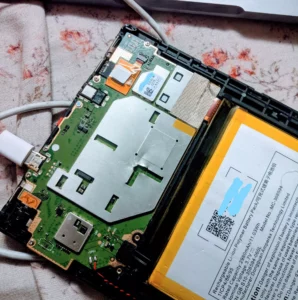Have you ever wondered how manufacturers determine their smartphone prices? Why does the iPhone X base model cost $999, while similar spec-ed devices from other manufacturers cost less than half? All smartphone manufacturers follow a very simple rule when they set their device prices. I call it The Grand Theory of Smartphone Pricing.
The Formula and the factors
Over the past few years, we have experienced a revolution in the smartphone industry. Many before-unknown Chinese brands proved that it is possible to develop high-performance smartphones that are pocket-friendly. Sure – we have also seen disastrous events like the Samsung losing billions over the Galaxy Note 8 battery catching fire, and Apple getting backlashed by users for slowing down iPhones with a faulty battery.
But there are still high-end smartphones that carry a hefty price tag, yet have similar hardware specs as their cheaper counterparts. Why is there such inconsistency in the pricing?
It’s because all manufacturers follow a common formula for determining retail prices for smartphones.
The formula has nine parts. It never changes.
- Cost of spare parts and raw materials + Cost of labor + Cost of running the factory + Cost of transportation and internal shipping + Cost of warehousing = Base Hardware Manufacturing Cost
- Cost of developing phone’s operating system + Cost of licensing third-party software + Cost of getting device certification = Base Software Development Cost
- Retail Chain and Sales Channel Operation Cost (Optional)
- Marketing Cost (Optional)
- Warranty and After-sales Service Operation Cost (Optional)
- End-product Regulatory Compliance Certification (FCC and others)
- Pre-usage profit (0% to 300% of Retail Price)
- Post-usage profit (0% to unlimited)
- Tax (Depends on country)
These are the factors that manufacturers take into account when they determine how much they are going to charge as the Retail Price. Lastly, sometimes there is also a Reseller Profit, but that is out of the control of the manufacturer and depends entirely on supply and demand.
Okay, so why is Apple ripping us off? How do Xiaomi and others manage to sustain with so little profit margin?
It varies widely and depends on the manufacturer’s business model/philosophy. I will give an example of Apple and Xiaomi.
Apple, an industry leader and arguably the most influential smartphone manufacturer ever, is known for its premium-priced devices. Apple products are expensive and quite pocket-heavy for most people.
Apple has a very simple philosophy. They only care about the quality, efficiency, durability, and user experience of their Smartphones and nothing else. Hardware-wise, Apple’s smartphones pack the best quality stuff. Software-wise, they are also one of the most secure. Apple’s Base Hardware Manufacturing Cost and Base Software Development Cost are high. They also have high Marketing Cost. Apple doesn’t display ads or load bloatware on their phone. You are paying and they are giving. They aren’t selling you to advertisers.
Apple makes around 30%-40% of the pre-usage profit from each smartphone sale, which is high but enables them to invest in R&D.
Xiaomi makes great phones that are very budget-friendly. Before Xiaomi revolutionized the Chinese smartphone industry, most people outside of China had a preconceived notion that Chinese smartphones are of cheap quality. But Xiaomi completely changed the game. Xiaomi phone packs great hardware and comes cheap.
Xiaomi has very little Marketing Cost and also comparatively low Retail Chain and Sales Channel Operation Costs.
But there’s a big trade-off. Xiaomi gives lower priority to Software Development and User Experience. So despite having good hardware, their phones lack on the software side.
Xiaomi makes only 5% pre-usage profit off each phone sale. But this is because they have a very different business strategy than Apple’s. Xiaomi phones display third-party ads and run the MIUI skin which heavily promotes Xiaomi’s online services. Xiaomi wants to make a post-usage profit.
Other manufacturers also have different strategies, but the main theory always stays the same.



